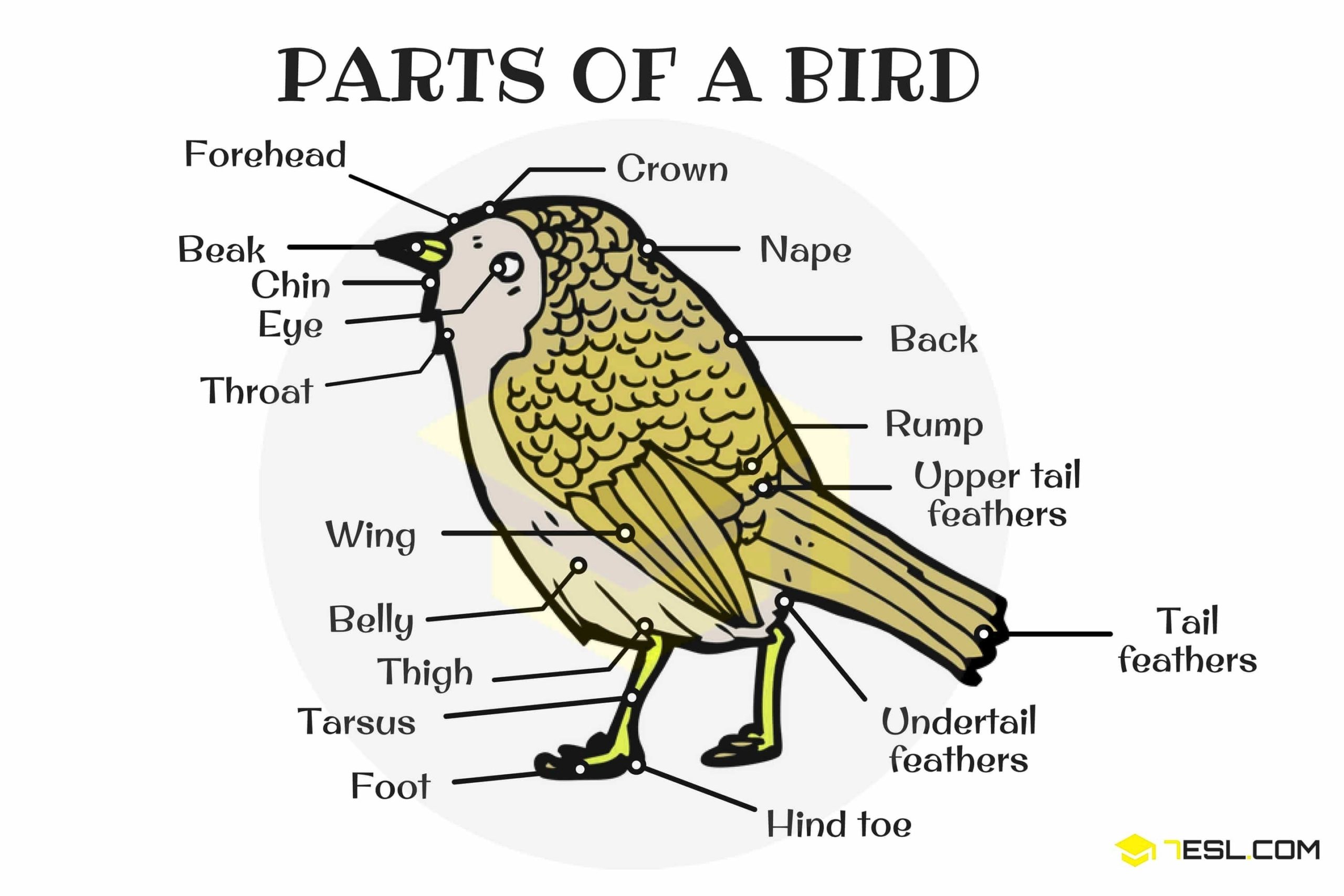
Birds are fascinating creatures that have evolved over millions of years to become one of the most diverse and successful groups of animals on the planet. They are known for their unique adaptations that allow them to fly, swim, and survive in a wide range of environments. In this response, I will provide an overview of the different parts of a bird’s anatomy.
The anatomy of a bird is highly specialized and adapted for flight. The most obvious adaptation is the wings, which are modified forelimbs that allow birds to fly. The wings are composed of three main parts: the primary feathers, the secondary feathers, and the covert feathers. The primary feathers are the longest and strongest feathers on the wing and are responsible for generating lift. The secondary feathers are shorter and help to control the bird’s direction and speed. The covert feathers are small feathers that cover the base of the primary and secondary feathers and help to streamline the wing.
Another important adaptation for flight is the bird’s respiratory system. Birds have a unique respiratory system that allows them to extract oxygen from the air more efficiently than mammals. The respiratory system consists of a series of air sacs and tubes that extend throughout the bird’s body. When a bird inhales, air flows through the trachea and into the posterior air sacs. When the bird exhales, the air is forced out of the posterior air sacs and into the lungs. When the bird inhales again, the air flows from the lungs into the anterior air sacs. When the bird exhales again, the air is forced out of the anterior air sacs and out of the body. This system allows birds to extract oxygen from the air more efficiently and to maintain a high metabolic rate during flight.
The beak is another important adaptation for birds. The beak is a specialized structure that is used for feeding, grooming, and other activities. The shape and size of the beak vary depending on the bird’s diet and lifestyle. For example, birds that feed on insects have sharp, pointed beaks that are used for catching and piercing their prey. Birds that feed on seeds have short, thick beaks that are used for cracking open seeds. Some birds, such as parrots, have strong, curved beaks that are used for climbing and manipulating objects.
The feet and legs of birds are also highly specialized and adapted for a wide range of activities. Birds that live in trees, such as woodpeckers and owls, have strong, curved claws that are used for gripping branches and tree trunks. Birds that live near water, such as ducks and swans, have webbed feet that are used for swimming. Birds that live on the ground, such as chickens and turkeys, have strong, scaly legs that are used for walking and scratching.
The feathers of a bird are also an important part of its anatomy. Feathers are composed of a central shaft, called the rachis, that supports a series of barbs. The barbs are held together by tiny hooks, called barbules, that interlock to form a flat surface. The feathers are arranged in a specific pattern on the bird’s body and are used for insulation, waterproofing, and display. Some birds, such as peacocks and birds of paradise, have elaborate feather displays that are used for courtship and mating.
In conclusion, birds are fascinating creatures that have evolved a wide range of adaptations to survive in different environments. Their anatomy is highly specialized and adapted for flight, feeding, and other activities. The wings, respiratory system, beak, feet, legs, and feathers are all important parts of a bird’s anatomy that contribute to its unique adaptations and success.

